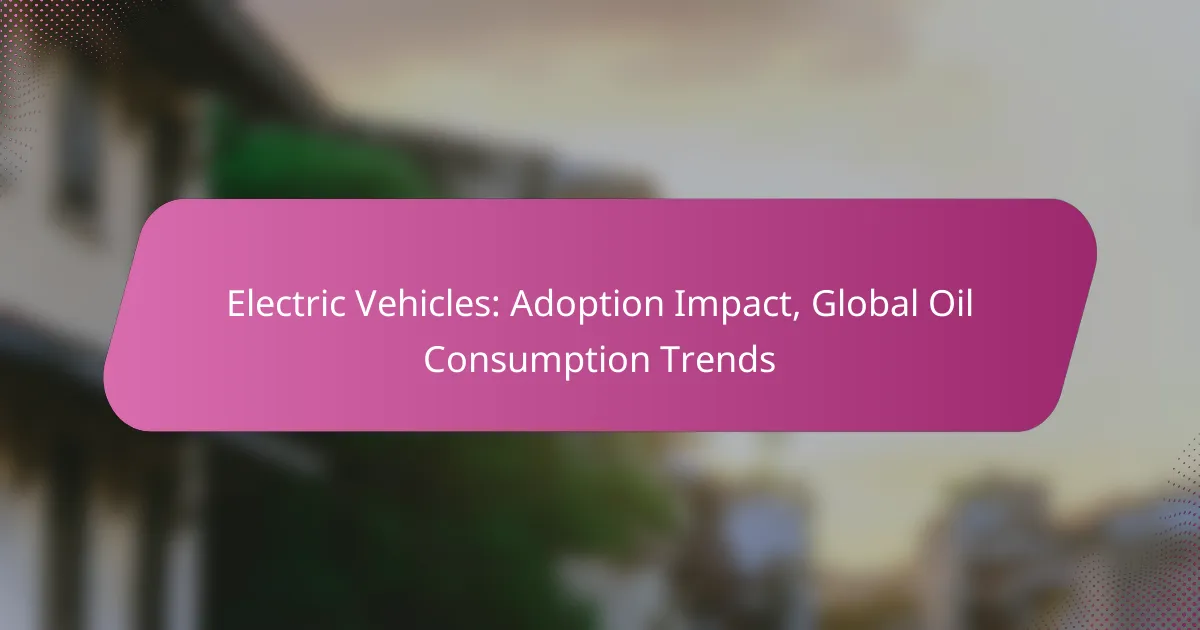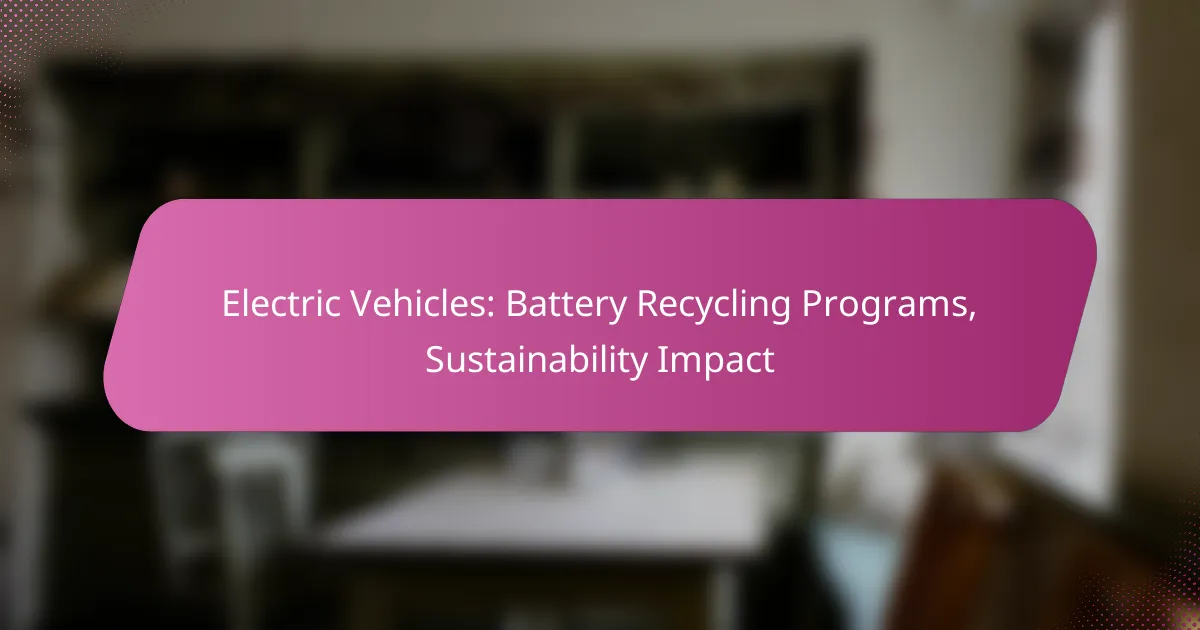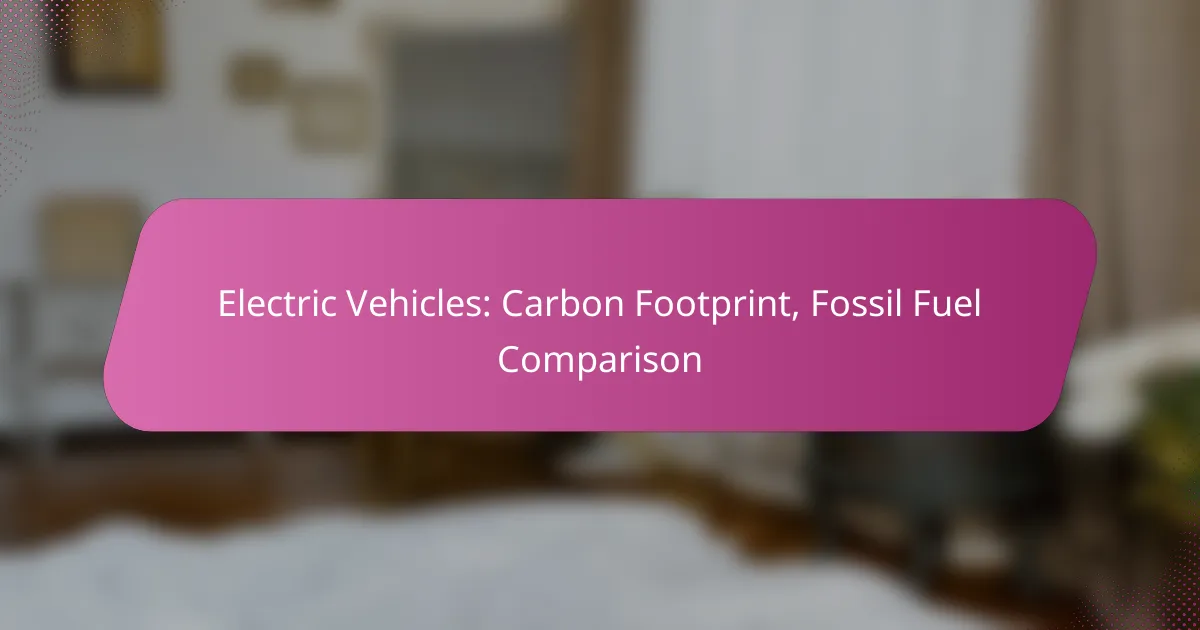Electric vehicles (EVs) are transforming the transportation landscape by significantly reducing global oil consumption and decreasing reliance on fossil fuels. As adoption rates rise, driven by technological advancements and environmental awareness, traditional automotive markets and global oil consumption patterns are undergoing substantial changes. Countries like Norway, China, and the United States are at the forefront of this shift, implementing strategies to facilitate the transition to electric mobility.
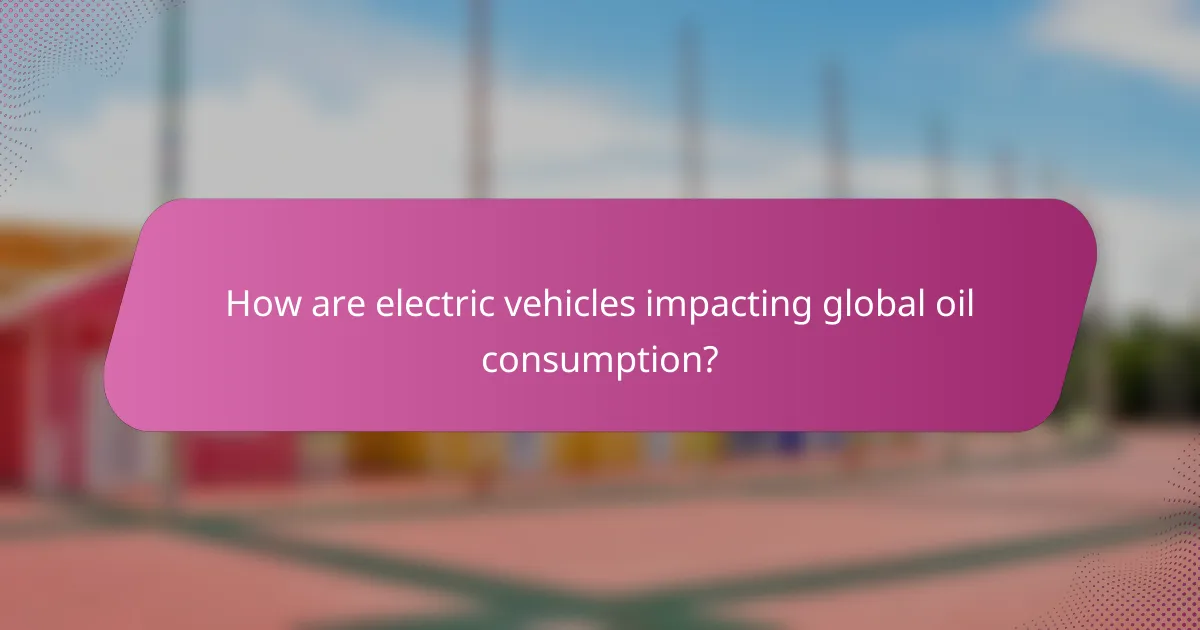
How are electric vehicles impacting global oil consumption?
Electric vehicles (EVs) are significantly reducing global oil consumption by decreasing the demand for gasoline and diesel. As more consumers and businesses adopt EVs, the reliance on fossil fuels for transportation is expected to decline, leading to a shift in energy dynamics worldwide.
Reduction in oil demand
The rise of electric vehicles is leading to a noticeable reduction in oil demand, particularly in the transportation sector. With EVs accounting for a growing share of new vehicle sales, oil consumption is projected to decrease, especially in urban areas where charging infrastructure is expanding.
For instance, some studies suggest that widespread EV adoption could reduce oil demand by tens of millions of barrels per day over the next decade. This shift not only impacts oil markets but also contributes to lower greenhouse gas emissions.
Shift in energy consumption patterns
As electric vehicles gain popularity, energy consumption patterns are shifting from oil-based fuels to electricity. This transition is prompting a greater focus on renewable energy sources, such as solar and wind, to power EVs, further decreasing reliance on oil.
Countries are increasingly investing in charging infrastructure and renewable energy projects to support this shift. For example, nations like Norway and the Netherlands are leading the way in integrating EVs into their energy systems, showcasing a model for others to follow.
Impact on oil prices
The growing adoption of electric vehicles is likely to exert downward pressure on oil prices over time. As demand for oil decreases, particularly from the transportation sector, market dynamics will shift, potentially leading to lower prices for consumers.
However, the extent of this impact will depend on various factors, including the pace of EV adoption, technological advancements, and geopolitical developments in oil-producing regions. Short-term fluctuations may still occur due to supply chain issues or unexpected demand surges.
Regional differences in oil dependency
Oil dependency varies significantly across regions, influencing how electric vehicles impact local consumption. In oil-rich countries, the transition to EVs may be slower due to economic reliance on oil revenues, while nations with limited oil resources may accelerate EV adoption to enhance energy security.
For example, countries like Saudi Arabia may face challenges in reducing oil consumption, whereas European nations are actively promoting EVs as part of their climate goals. Understanding these regional differences is crucial for predicting the overall impact of EVs on global oil consumption.
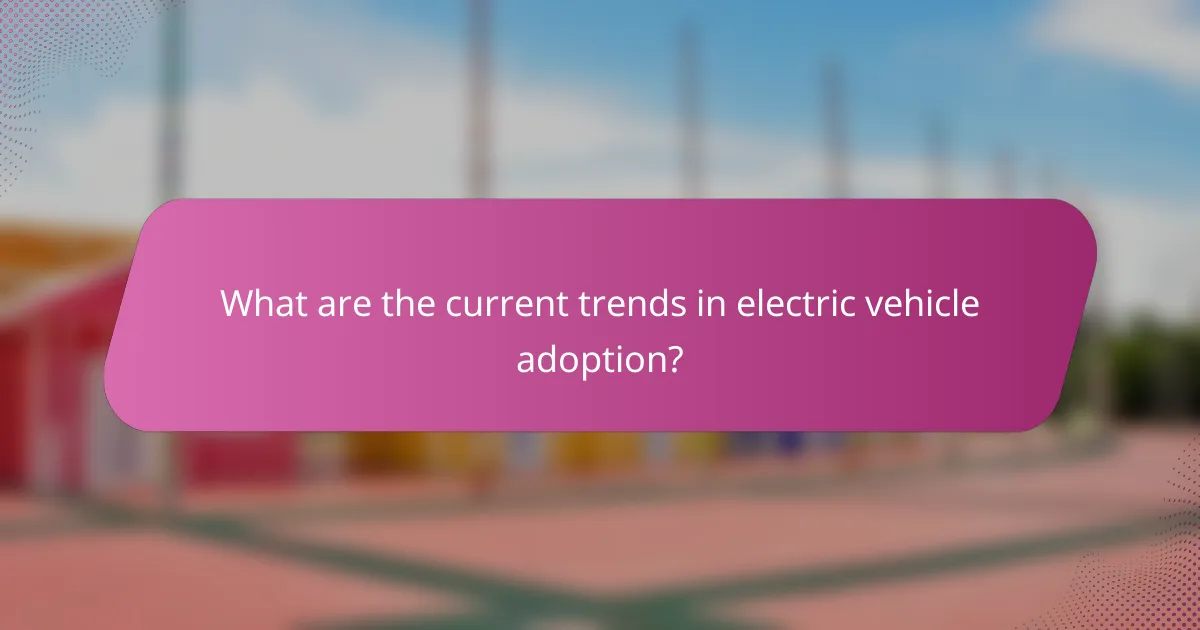
What are the current trends in electric vehicle adoption?
Electric vehicle (EV) adoption is rapidly increasing globally, driven by advancements in technology, environmental concerns, and changing consumer preferences. This shift is significantly impacting traditional automotive markets and global oil consumption patterns.
Growth in electric vehicle sales
Electric vehicle sales have seen remarkable growth, with many countries reporting annual increases in the range of 30-50%. Major markets like China, the United States, and several European nations are leading this surge, with EVs now accounting for a notable percentage of total vehicle sales.
For instance, in 2022, electric vehicles made up around 10-15% of new car sales in Europe, reflecting a strong trend towards electrification. This growth is expected to continue as manufacturers expand their EV offerings and improve battery technology.
Government incentives and policies
Many governments are implementing incentives to encourage electric vehicle adoption, including tax credits, rebates, and grants. In the United States, for example, buyers can receive tax credits of up to $7,500 for qualifying electric vehicles, which significantly lowers the purchase price.
Additionally, countries like Norway have introduced policies that exempt electric vehicles from tolls and parking fees, making them more attractive to consumers. These incentives are crucial in accelerating the transition to electric mobility.
Consumer attitudes towards electric vehicles
Consumer attitudes towards electric vehicles are shifting positively, with increasing awareness of environmental issues and the benefits of EV ownership. Many potential buyers are now prioritizing sustainability, leading to a greater acceptance of electric vehicles.
However, concerns about charging infrastructure and battery range still exist. A significant number of consumers express a preference for vehicles that can travel at least 300 kilometers on a single charge, highlighting the importance of ongoing improvements in battery technology and charging networks.
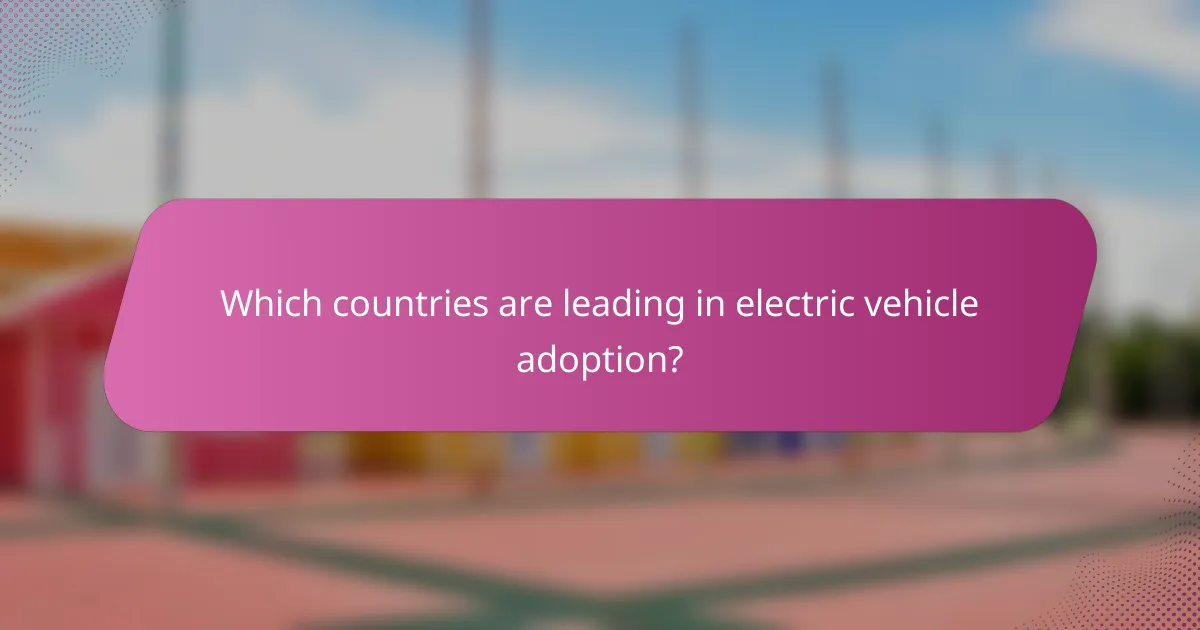
Which countries are leading in electric vehicle adoption?
Countries leading in electric vehicle (EV) adoption include Norway, China, and the United States, each showcasing unique strategies and significant market penetration. These nations have implemented various incentives, infrastructure developments, and regulatory frameworks to promote the transition to electric mobility.
Norway’s electric vehicle market
Norway stands out as a global leader in electric vehicle adoption, with EVs making up a substantial portion of new car sales. As of recent years, over half of all new vehicles sold in Norway are electric, driven by strong government incentives such as tax exemptions, free tolls, and access to bus lanes.
The country has also invested heavily in charging infrastructure, ensuring that EV owners have convenient access to charging stations. This commitment to sustainability has positioned Norway as a model for other nations looking to increase their electric vehicle market share.
China’s electric vehicle initiatives
China has rapidly expanded its electric vehicle initiatives, becoming the largest market for EVs globally. The Chinese government has set ambitious targets for EV adoption, aiming for a significant percentage of new vehicle sales to be electric by the end of the decade.
Substantial investments in battery technology and manufacturing have bolstered the domestic EV industry, with companies like BYD and NIO leading the charge. Additionally, urban areas are implementing policies to restrict the sale of gasoline vehicles, further encouraging the shift to electric mobility.
United States electric vehicle growth
The United States is experiencing notable growth in electric vehicle adoption, driven by a combination of federal and state incentives. Tax credits for EV purchases and investments in charging infrastructure are helping to make electric vehicles more accessible to consumers.
Major automakers are expanding their electric offerings, with plans to introduce a wide range of models in the coming years. As awareness of climate change and sustainability increases, consumer interest in electric vehicles is expected to continue rising, supported by advancements in battery technology and charging solutions.
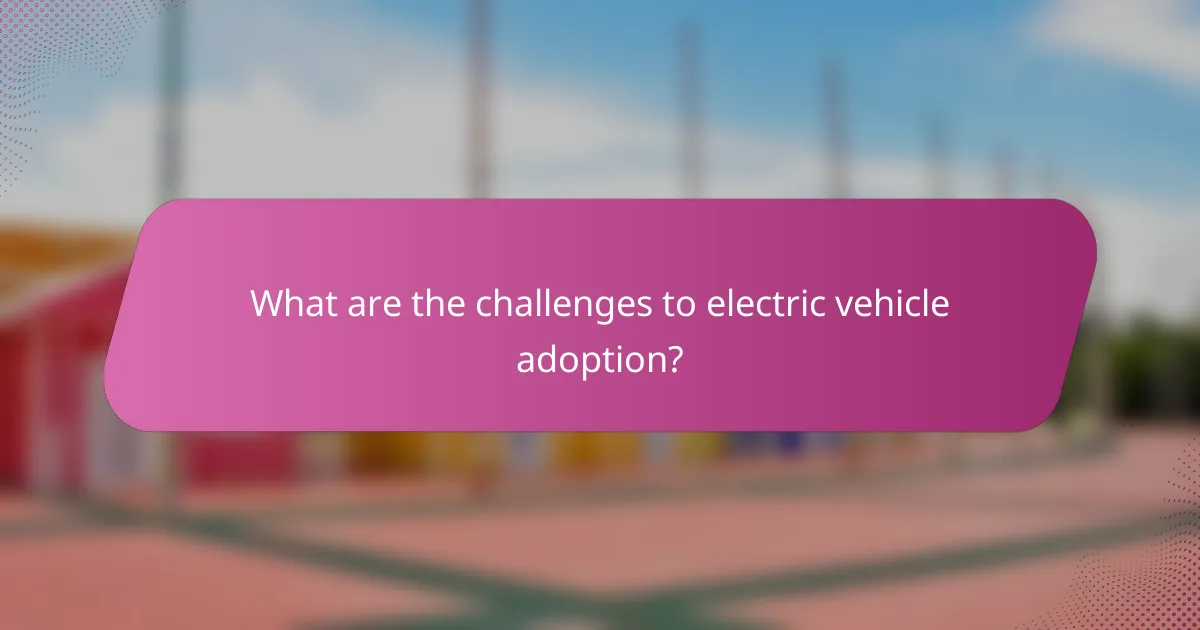
What are the challenges to electric vehicle adoption?
Electric vehicle (EV) adoption faces several challenges that can hinder widespread acceptance. Key obstacles include insufficient charging infrastructure, limitations in battery technology, and strong competition from traditional gasoline vehicles.
Charging infrastructure limitations
One of the primary challenges to electric vehicle adoption is the lack of adequate charging infrastructure. Many regions still have a limited number of charging stations, making it difficult for potential EV owners to find convenient charging options.
To address this, governments and private companies are investing in expanding charging networks. However, in rural areas or less developed regions, the availability of charging stations may still be sparse, which can deter potential buyers.
Battery technology constraints
Battery technology plays a crucial role in the performance and appeal of electric vehicles. Current battery systems often face issues such as limited range, long charging times, and high costs, which can affect consumer interest.
Advancements in battery technology are ongoing, with research focused on improving energy density and reducing charging times. However, until these improvements are realized, many consumers may hesitate to switch from traditional vehicles to EVs.
Market competition from traditional vehicles
Electric vehicles are competing against well-established traditional vehicles that benefit from lower initial costs and a familiar refueling process. Many consumers still prefer gasoline cars due to their lower upfront prices and extensive availability.
Additionally, traditional automakers are investing in hybrid and fuel-efficient models, which can further complicate the market landscape for electric vehicles. As a result, EV manufacturers must work harder to demonstrate the long-term savings and environmental benefits of electric vehicles to sway consumer preferences.
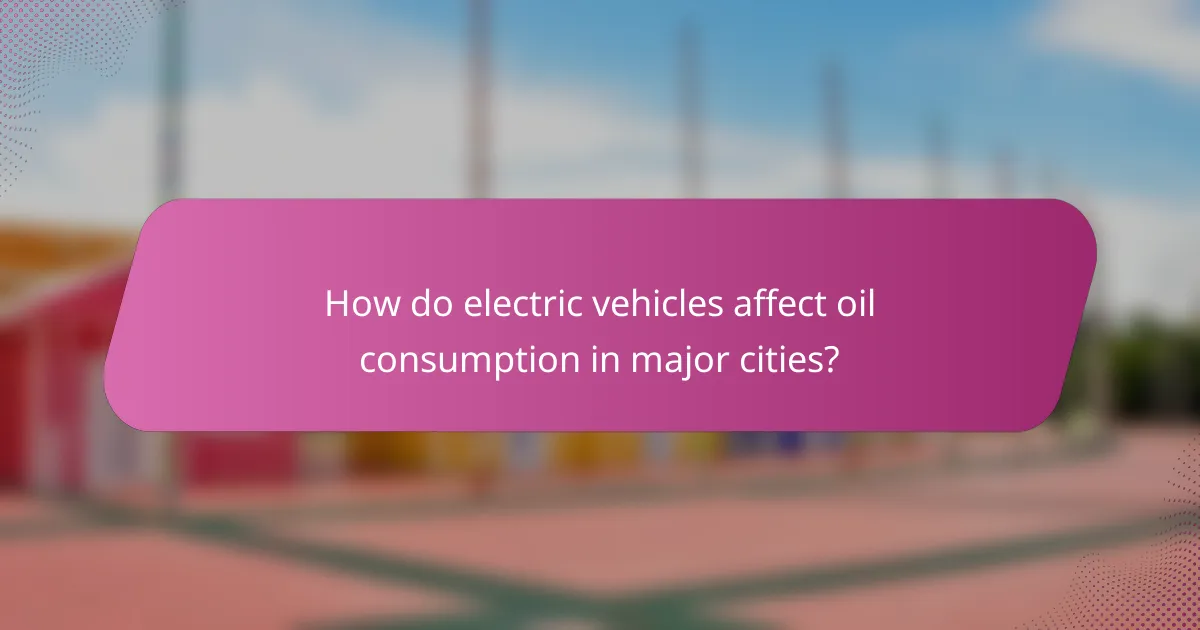
How do electric vehicles affect oil consumption in major cities?
Electric vehicles (EVs) significantly reduce oil consumption in major cities by decreasing the demand for gasoline and diesel. As more people adopt EVs, the overall reliance on fossil fuels diminishes, leading to lower oil consumption rates.
Urban air quality improvements
The adoption of electric vehicles contributes to better urban air quality by reducing harmful emissions from traditional combustion engines. Cities with higher EV penetration often experience lower levels of nitrogen oxides and particulate matter, which can lead to improved public health outcomes.
For example, cities like Oslo and Amsterdam have reported noticeable improvements in air quality metrics as EV usage increases. This shift not only benefits residents but also enhances the overall livability of urban areas.
Changes in traffic patterns
Electric vehicles can alter traffic patterns by encouraging the use of shared mobility solutions and reducing congestion. As cities implement more EV charging stations, drivers may opt for electric car-sharing services, leading to fewer vehicles on the road.
Moreover, the quiet operation of EVs can lead to changes in pedestrian behavior, as people may feel safer crossing streets with less noise and fewer emissions. This shift can promote walking and cycling, further reducing reliance on oil-based transportation.
Local government policies
Local governments play a crucial role in promoting electric vehicle adoption through policies and incentives. Many cities offer tax credits, rebates, and grants to encourage residents to purchase EVs, which can significantly impact oil consumption.
Additionally, some municipalities are implementing stricter emissions regulations and investing in EV infrastructure, such as charging stations and dedicated lanes. These policies not only support the transition to electric vehicles but also help to create a sustainable urban environment.
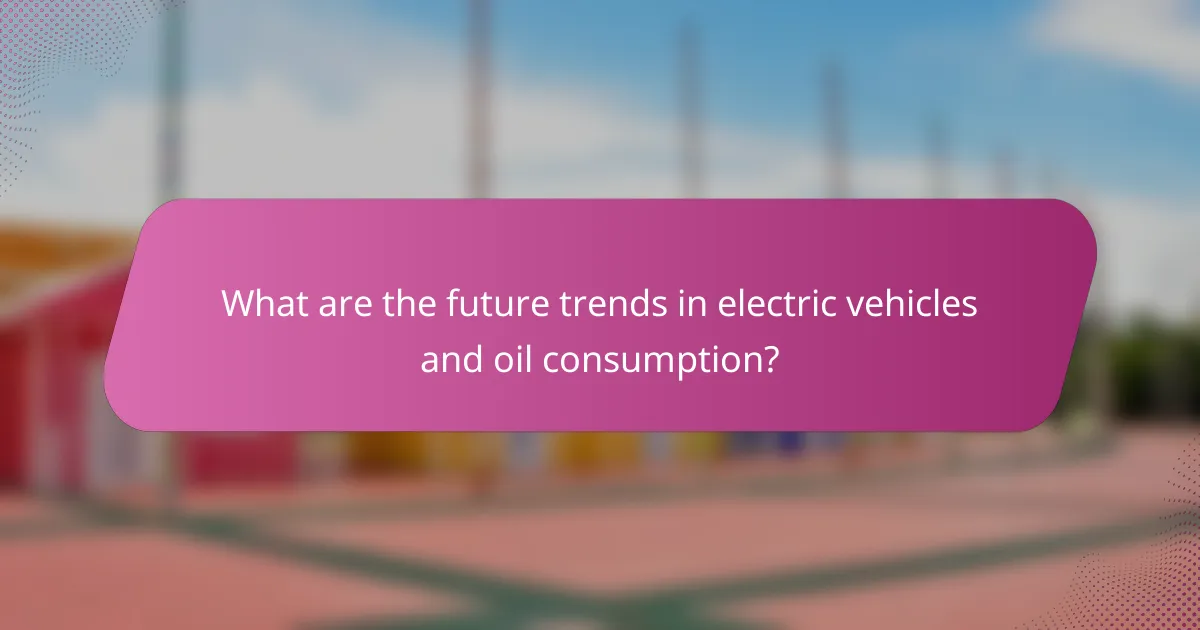
What are the future trends in electric vehicles and oil consumption?
The future trends in electric vehicles (EVs) indicate a significant shift towards reduced oil consumption globally. As EV adoption increases, it is expected that oil demand will decline, particularly in the transportation sector, leading to a transformation in energy consumption patterns.
Growth of Electric Vehicle Adoption
Electric vehicle adoption is projected to rise sharply due to advancements in battery technology, increased model availability, and supportive government policies. Many countries are setting ambitious targets to phase out internal combustion engines, which will further accelerate the transition to EVs.
For instance, several European nations aim for a complete ban on new petrol and diesel cars by 2030 or 2035. This shift will not only enhance EV market penetration but also encourage investments in charging infrastructure and renewable energy sources.
Impact on Global Oil Consumption
The rise of electric vehicles is expected to lead to a substantial decrease in global oil consumption, particularly in the transportation sector, which has traditionally been a major consumer of oil. As more consumers switch to EVs, oil demand could decline by tens of percent over the next few decades.
In regions heavily reliant on oil for transportation, such as North America and parts of Asia, this trend may prompt significant economic shifts, affecting oil prices and the energy market landscape. Countries may need to diversify their energy strategies to adapt to these changes.
Challenges and Considerations
While the transition to electric vehicles presents numerous benefits, it also comes with challenges. Infrastructure development for charging stations is crucial to support widespread EV adoption. Additionally, the environmental impact of battery production and disposal must be addressed to ensure sustainable growth.
Consumers should consider factors such as range, charging time, and total cost of ownership when evaluating electric vehicles. Understanding local incentives, such as tax credits or rebates, can also influence the decision to switch to an EV.
